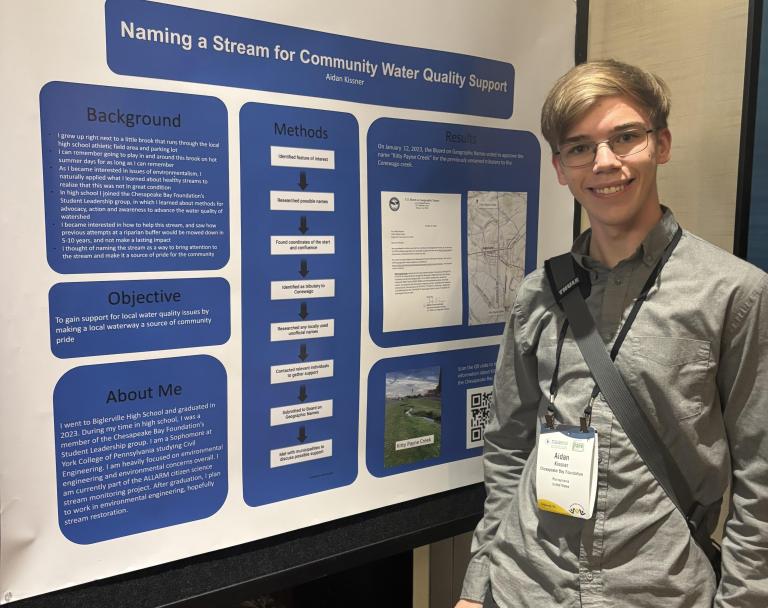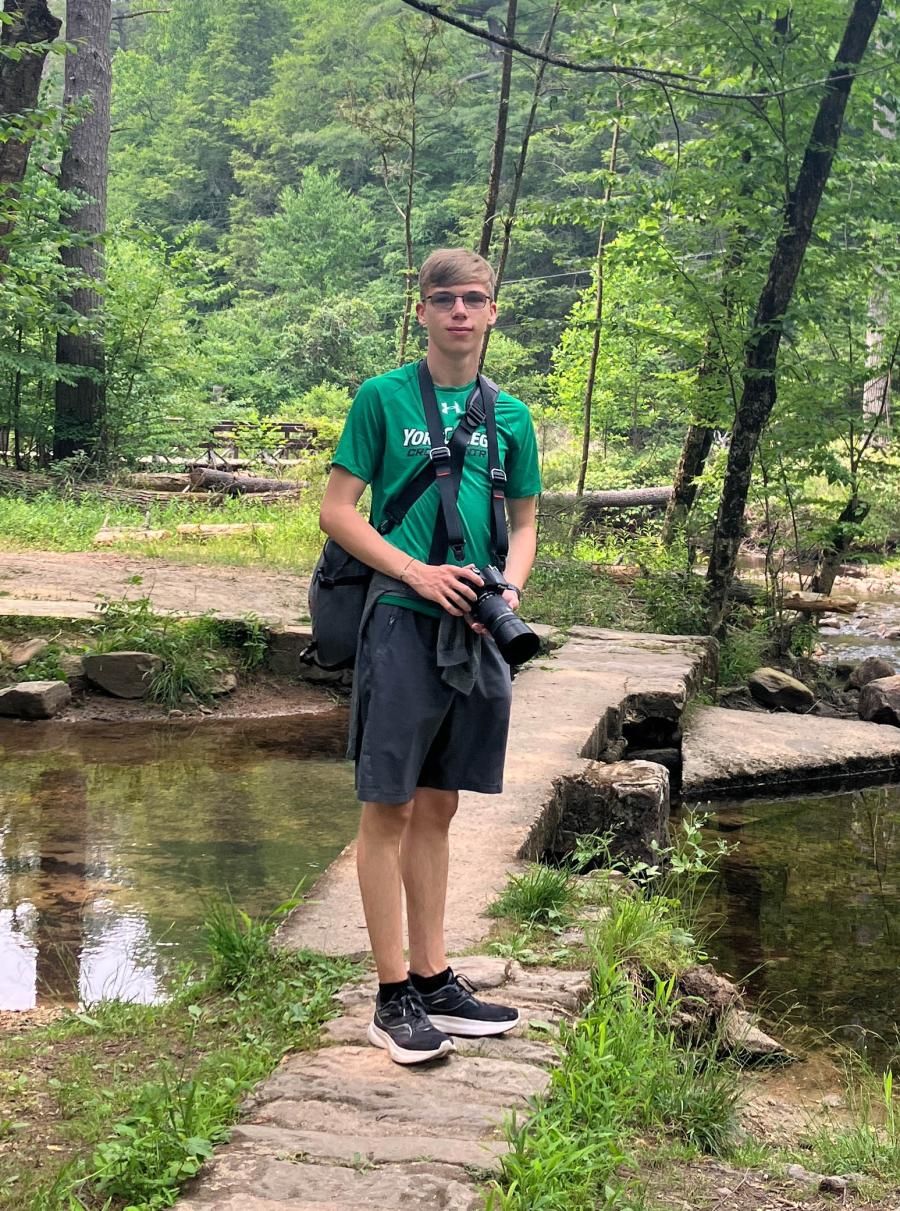York College Civil Engineering Sophomore Presents at International Conference on Hometown Stream

In November 2024, Aidan Kissner attended the North American Association for Environmental Education’s annual conference. There, he presented a poster detailing how he helped name a stream in his hometown of Biglerville.
In his senior year of high school, Aidan Kissner ’27, a Civil Engineering major at York College of Pennsylvania, succeeded in accomplishing a project he had been passionate about for years: naming and bringing more awareness to a stream in his hometown of Biglerville.
It is an achievement he is quite proud of. Aidan completed it with the help of the Chesapeake Bay Foundation (CBF), a nonprofit organization dedicated to preserving the Chesapeake Bay. When the organization reached out to Aidan nearly two years later about doing a poster presentation about his project for the 2024 North American Association for Environmental Education (NAAEE) conference, he was more than happy to share his experience with other environmental enthusiasts.
Environmental Roots
The NAAEE is a nonprofit organization passionate about educating and spreading awareness about environmental issues worldwide. According to its website, its mission is “[using] the power of education to advance environmental literacy and civic engagement to create a more equitable and sustainable future,” which it has been doing for over fifty years.
Every year, the NAAEE holds a conference in North America where environmentalists come together to network and share resources to further strengthen and foster camaraderie within the field of environmental education. Whether they are professional educators or students, the event invites speakers and presenters from all over the world to share their passions and research.
This past year, the NAAEE annual conference was held in Pittsburgh, Pennsylvania, from November 6th-9th, 2024.
Aidan joined the CBF’s Student Leadership program in ninth grade when one of his teachers noticed his interest in environmentalism and recommended connecting with a senior involved in the program. He enjoyed his time as a student leader and participated in summer workshops and events that allowed him to learn about advocacy action for water quality in the Chesapeake Bay.
Since graduating high school, the CBF has kept in touch with Aidan. When they recommended that he attend the NAAEE conference in November, Aidan was happy to travel to Pittsburgh.
There, he had the opportunity to interact with many people and watch engaging presentations. Some examples include meeting a student from the University of Botswana who did an awareness project about issues with solid waste infrastructure in Botswana and witnessing a presentation on the link between human and environmental health.
A Meaningful Name
The stream Aidan named was close to his childhood home. Seeing how a place filled with many nostalgic memories began to disappear spurred Aidan to take action and start researching ways to preserve it.

“I had seen this stream for a while,” Aidan said, “and through the work with the Chesapeake Bay Foundation, I became interested in trying to potentially rehabilitate the stream. To bring it back to a more natural condition and lessen some of the anthropogenic factors that were making it lower water quality.”
Aidan found that many typical restoration methods had failed throughout the years and concluded that this was the result of the stream's limited awareness. He figured that for more effective restoration in the future, the small body of water needed to become a known landmark, which sparked the idea of naming the stream.
Aidan contacted the U.S. Board of Geographic Names and spent the next few months gathering data on the stream. Once he submitted his data in early 2023, he received word from the Board of Geographic Names that the stream had been officially named.
Today, Aidan’s stream is now known as Kitty Payne Creek.
The stream is named after Catherine “Kitty” Payne, a woman who lived in the area in the mid-late 1800s. Originally from Virginia, where she was enslaved, Payne was freed and moved to Pennsylvania but was recaptured only a few years later. Payne was taken back to Virginia but managed to sue and win back her freedom legally in the court system, returning to Pennsylvania afterward.
“I came upon that story, and I decided that in trying to bring awareness to the stream itself, I also wanted to try to bring awareness to this bit of local history that not too many people knew about,” Aidan said.
Future Aspirations
This project is a small part of Aidan’s future career plans. He is currently studying Civil Engineering, and his main interest lies in environmental engineering, where he hopes to work in stream restoration.
“I’ve always enjoyed playing in the streams,” Aidan said, “and I’ve always noticed how some streams looked different. How [a] stream [may not] have very many bugs in it…[or] fish. Just seeing that decline over time, especially, is kind of discouraging.”
“I think just trying to bring people around the stream itself really is one of the best things. Just having people see it and notice it, that’s the first step to other people caring about it.”.
Aidan hopes to do more work advocating for these natural places. He’s found that, with this particular experience, raising awareness can be the first major step in effective restoration. He will also continue his involvement in other groups and organizations, including the ALLARM Stream Monitoring Group and the American Society of Civil Engineers (ASCE), to make an impact where he can.
Photo Credit: Kassie Fenn/Chesapeake Bay Foundation




